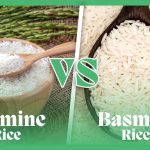Welcome to the savoury world of legumes, where beans are the main star and provide an incredible amount of nutrients! We’ll be delving into the fascinating world of Pinto versus Black beans in this nutritious showdown—two culinary titans that have merited their positions as pantry mainstays. Before we go out on our adventure, let’s take a moment to discuss the nutritious value of beans—tiny yet powerful goodness pods.
Next, we will focus on the two main characters in our comparison: the bold black beans and the adaptable pinto beans. As we reveal the nutritional benefits of various legumes, be ready for a delicious journey that will help you make the best decision for your health objectives. Start the fight of the beans!
What are pinto beans?
Phaseolus vulgaris, or pinto beans, are medium-sized, beige beans speckled with reddish-brown. Their mild, nutty flavour and creamy texture make them popular in Southwestern and Mexican cuisines. Pinto beans are frequently used in meals including burritos, refried beans, and chilli.
Although black beans and pinto beans have different tastes and looks, they are similar in terms of nutrition as they are both high in fibre, protein, vitamins, and minerals. Both beans are also readily included in a balanced diet, offering vital minerals and promoting general health.

What are black beans?
Phaseolus vulgaris, the scientific name for black beans, are tiny, glossy beans with a deep, earthy flavour and a substantial, meaty texture. They are prized for their high protein and fibre content, as well as their adaptability in a variety of meals such as soups, stews, salads, and side dishes. They are a mainstay in many Latin American, Caribbean, and Southwestern cuisines.

Nutritional composition of pinto beans and black beans:
Distinguished by their beige and speckled look, pinto beans are a great plant-based protein choice for vegetarians and vegans. They have a high protein content of 21 grams per 100 grams. Additionally, high in dietary fibre (16g per 100g), pinto beans support healthy digestion and help to keep blood sugar levels steady. Furthermore, they are rich in thiamine (0.8 mg) and folate (245 mcg), two important B vitamins that support several metabolic processes.
Nutritional composition of black beans:
Black beans provide equal nutritional advantages despite their deep black appearance. At 22 grams per 100 grams, they have a slightly greater protein level than pinto beans. The vitamin and mineral richness of black beans is very notable. They are an excellent source of vitamin K (8.4mcg) and vitamin C (1.9 mg), which support bone health and the immune system, respectively.
Additionally, black beans provide significant concentrations of zinc (1.9 mg) and potassium (611 mg), which enhance immunological system function and electrolyte balance. A balanced diet that includes both black and pinto beans can benefit general health by offering a variety of vital elements.
Nutritional Profile of Pinto Beans and Black Beans:
The nutritional profiles of pinto and black beans are varied, offering important elements such as lipids, dietary fibre, carbs, and protein. Certain vitamins and minerals are revealed by their micronutrient content, underscoring both their function in supporting a balanced diet and possible health advantages.
Macronutrients in pinto beans and black beans:
| Nutrient | Pinto Beans (per 100g) | Black Beans (per 100g) |
|---|---|---|
| Protein | 21 g | 22 g |
| Carbohydrates | 63 g | 63 g |
| Dietary Fibre | 16 g | 16 g |
| Fat | 1 g | 0.5 g |
Micronutrients in Pinto Beans:
| Nutrient | Pinto Beans (per 100g) |
|---|---|
| Folate | 245 mcg |
| Thiamine | 0.8 mg |
| Iron | 2.4 mg |
| Magnesium | 43 mg |
Micronutrients in Black Beans:
| Nutrient | Black Beans (per 100 g) |
|---|---|
| Vitamin C | 1.9 mg |
| Vitamin K | 8.4 mcg |
| Potassium | 611 mg |
| Zinc | 1.9 mg |
Role in human nutrition:
Pinto and black beans are great options for a diet high in nutrients since they have several similar health advantages. Some of the shared roles of both are here.
Promote heart health:
Both black beans and pinto beans are high in nutrients that support heart health. Because pinto beans are strong in soluble fibre, which binds to cholesterol molecules and encourages their elimination, they can help decrease blood cholesterol levels. They also include substances like phytosterols and saponins, which may help lower cholesterol even further.
Pinto beans include potassium, which lowers blood pressure, and magnesium, which strengthens heart function overall. Frequent eating of pinto beans has been linked to lipid profile benefits, such as lower LDL cholesterol levels. Because of their antioxidants and dark hue, black beans also help to avoid cardiovascular illnesses and assist in blood pressure management, which is beneficial to heart health. (1), (2)
Regulate blood pressure:
Magnesium and potassium, which are vital for controlling blood pressure, are abundant in pinto and black beans. By offsetting the effects of sodium, potassium aids in the maintenance of fluid balance and lessens the burden on the cardiovascular system.
Magnesium modulates the dynamics of blood pressure and relaxes blood vessels. Studies demonstrate the beneficial effects of diets high in potassium, such as those including pinto beans, on blood pressure control. Because of their high potassium content, which counteracts the hypertensive effects of sodium and encourages salt excretion, black beans also assist regulate blood pressure. Both types of beans may be used in diets to support heart health. (3), (4)
Improves digestive health:
Because they include a lot of fibre, pinto and black beans are both vital for digestive health. Because pinto beans contain soluble fibre, they can relieve irritable bowel syndrome symptoms and avoid constipation by gelling in the digestive system. Conversely, the high fibre content of black beans promotes regular bowel movements and effective passage through the digestive system. Black beans’ resistant starch functions as a prebiotic, encouraging the development and activity of good gut flora. Due to their ability to improve bowel regularity and stave off constipation, both beans are important for maintaining digestive health. (5)
Regulates blood sugar level:
Because pinto and black beans contain complex carbs that break down slowly and don’t cause abrupt increases in blood sugar, they are good for managing and avoiding diabetes. Because of its low glycemic index, pinto beans help provide a steady flow of energy, which gradually stabilizes blood sugar levels. Additionally, fibre content improves insulin sensitivity by assisting in blood sugar management. Studies demonstrate these legumes’ beneficial effects on diabetes control. (6)
Unique Health Benefits of Pinto Beans:
Due to particular components, pinto beans provide special health advantages which are jotted down.
Improves maternal and fetal health:
A B vitamin called folate is abundant in pinto beans and is particularly beneficial for the health of the mother and fetus during pregnancy. Anencephaly and spina bifida are two neural tube abnormalities that can be prevented with an adequate folate diet. It also inhibits anaemia and promotes the production of red blood cells. Studies indicate a favourable association between folate consumption and a decrease in neural tube abnormalities, highlighting the significance of including foods high in folate in pregnant women’s diets. (7)
Aids in weight management:
Pinto beans are high in fibre and protein, which can aid in controlling weight. Protein aids in appetite regulation, which results in less food being consumed and better eating habits. Fibre prolongs the sense of fullness by reducing the absorption of nutrients, which increases satiety. Research indicates that adding pinto beans to meals improves fullness and helps with weight control. This adaptable legume helps with weight management and provides nutritional advantages. (8)
Maintains cholesterol levels:
Pinto beans, which are high in soluble fibre, have been shown to enhance cardiovascular health by having a favourable impact on inflammatory indicators and cholesterol levels. This is because they can bind to cholesterol in the gastrointestinal system, which decreases absorption and increases excretion.
Furthermore, pinto beans include antioxidants and anti-inflammatory properties that may help reduce inflammation brought on by cardiovascular diseases. In general, eating pinto beans is associated with better cardiovascular health. (9)
Unique Health Benefits of Black Beans:
Due to their distinct dark hue, black beans offer several health benefits, some of which are listed below.
Combat inflammation:
Anthocyanins, which are plant components with potent antioxidant qualities, are abundant in black beans, which are distinguished by their deep colour. By reducing inflammation and oxidative stress, these antioxidants promote general health. By scavenging free radicals, they safeguard cells and lower the likelihood of developing chronic illnesses.
Furthermore, the anti-inflammatory qualities of black beans aid in the management or prevention of disorders linked to inflammation. Studies show that eating black beans may be good for your general health. A tasty and healthful method to take advantage of black beans’ antioxidant potential is to include them in a well-balanced diet. (10)
Promote cognitive health:
Rich in vitamins, minerals, and antioxidants, black beans have been shown to support cognitive function and lower the risk of neurodegenerative illnesses. By shielding the brain from oxidative stress and inflammation, these substances delay the onset of neurodegenerative diseases including Parkinson’s and Alzheimer’s.
Black beans’ anthocyanins, which are antioxidants, are especially notable for their positive effects on cognition. Including black beans in a well-balanced diet might be a delicious and nourishing way to support brain function. (11)
Optimize blood pressure level:
The high potassium content of black beans is essential for sustaining healthy blood pressure levels and enhancing cardiovascular wellness. It prevents hypertension and enhances cardiovascular health by assisting in the regulation of fluid balance and salt counterbalancing.
Additionally, rich in fibre and magnesium, black beans support heart health by promoting normal blood flow. Studies demonstrate how dietary potassium helps to improve cardiovascular health as well as maintain normal blood pressure ranges. Black beans are a tasty and nutrient-rich method to enhance cardiovascular health when included in an appropriate diet. (12)
Culinary uses of pinto beans and black beans:
Both pinto and black beans are common ingredients in cuisines all around the world and have distinct tastes and textures. They are utilized in both traditional and contemporary cuisines because they are earthy, adaptable, and high in nutrients. While black beans are common in Latin American cuisine, pinto beans are utilized in Mexican stews and salads. Chefs and home cooks are inspired by their versatility.
International cuisine and pinto beans:
International and contemporary cuisine have adopted pinto beans. The nutritious content and adaptability of pinto bean salads, which include beans, veggies, and a spicy sauce, have made them popular. Moreover, pinto beans are employed as a high-protein substitute for meat in modern meals like vegetarian burritos. Pinto bean burgers and hummus are two examples of fusion meals that highlight how versatile these beans are to a wide range of culinary styles.
Traditional cuisine and pinto beans:
A common ingredient in many traditional recipes from many countries is pinto beans. A traditional recipe in Mexican cooking is called “Frijoles de la Olla,” which is pinto beans cooked till soft with aromatics including onion, garlic, and bay leaves.
Another classic delight is refried beans, which are typically eaten as a side dish and consist of boiled and mashed pinto beans that have been sautéed in lard as well as oil. Pinto beans are frequently used in robust stews and soups in the southern United States. One such soup is called “Ham and Pinto Bean Soup,” which combines the earthy flavour of pinto beans plus smoky ham.
International cuisine and black beans:
Modern and worldwide culinary innovations now include black beans. Across the Americas, black bean soups and salsas are popular and provide a wholesome and cool twist. Because of their bright tastes and adaptability, black bean salads with corn, avocado, and cilantro are a favourite. Around the world, black beans may be found in Asian-inspired meals like stir-fries and fusion recipes like black bean and corn tortillas or black bean quesadillas.
Traditional cuisine and black beans:
Black beans are a mainstay of Latin American cooking. In Cuban cooking, “Moros y Cristianos” are robust and savoury side dishes made with cooked black beans and rice. Often regarded as the national cuisine of Brazil, “Feijoada” is a classic black bean stew made with pig, sausages, and other pieces of meat. A flavorful and filling dinner is made by combining black beans with rice, peppers, and spices in a dish called “Gallopinto,” which is native to Costa Rica and Nicaragua.
Considerations in Special Diets:
Let’s take a closer look at pinto and black bean concerns for certain diets:
Gluten-Free:
Due to their inherent absence of gluten, black beans and pinto beans are good for people who have celiac disease or gluten sensitivity. A healthy substitute for grains like wheat, barley, and rye that contain gluten is to include beans in gluten-free dishes.
Plant-based and vegan diets:
Black and pinto beans are great sources of protein for those on these diets. They provide a well-rounded vegan diet by providing fibre, vitamins, and minerals, as well as vital amino acids. Diverse plant-based foods, such as salads and stews, may be made using a range of culinary techniques, which adds to the appeal of a vegan menu.
Flatulence and Digestive Problems:
Because beans contain oligosaccharides, some people may have digestive problems, including gas and bloating. Reducing digestive problems can be achieved by soaking beans before cooking them and by progressively consuming more beans.
Anti-Nutrients:
Certain people may experience difficulties absorbing certain nutrients due to the presence of lectins and phytates in beans. Incorporating appropriate preparation techniques, including soaking and cooking, might lessen the impact of anti-nutrients.
While there has been much discussion about the relative merits of pinto and black beans in the vibrant world of legumes, one thing is certain: both beans are highly nutritious and flavorful.
Including these legumes in your diet is a tasty and healthful option, regardless of your allegiance to Team Black or Team Pinto. The next time you’re trying to decide between these two culinary titans, keep in mind that you’re enjoying a wholesome journey that enhances the flavour and health of your meal, not just picking a bean. Savour the variety with your taste buds and let your body profit from this healthy bean battle. Happy and healthy eating! Cheers to savouring the lovely dance of tastes and minerals in every spoonful!
References:
- https://doi.org/10.1080/10408398.2020.1716680
- https://doi.org/10.1093/ajh/hpt155
- https://doi.org/10.1161/JAHA.119.015719
- https://doi.org/10.3390/nu14163363
- https://doi.org/10.3390/nu10010024
- https://doi.org/10.3390/nu10030373
- https://doi.org/10.1002/bdr2.1505
- https://doi.org/10.1016/j.jcjd.2016.05.015
- https://doi.org/10.1080/07315724.2007.10719607
- https://doi.org/10.3390/ph16060874
- https://doi.org/10.3390/pharmaceutics15030749
- https://doi.org/10.1161/JAHA.119.015719









